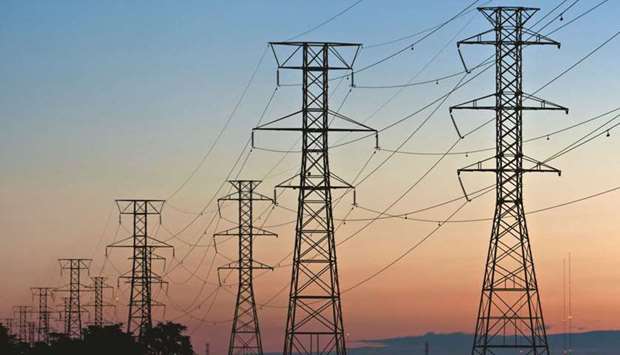Coal plants, nuclear reactors and other generators will take a hit next year on the biggest US power grid as payments plunge 64% to help keep the lights on from New Jersey to Illinois.
Suppliers to PJM Interconnection LLC’s grid, which serves more than 65mn people, will get $50 a megawatt-day to provide backup capacity for the year starting June 2022, according to the results of an auction released on Wednesday. It’s the lowest price in 11 years.
The results are an especially harsh blow for coal plants and nuclear reactors already struggling to compete. The PJM auction is the single most important event for generators across the eastern US, including Calpine Corp, NRG Energy Inc and Exelon Corp, because it dictates a big chunk of their future revenue. It also plays a pivotal role in shaping the region’s electricity mix, determining how much the region is willing to stick with coal and natural gas plants or replace then with wind and solar.
“I can’t imagine how nuclear is going to be able to cover all their fixed costs with such a low price,” said Brianna Lazerwitz, an analyst for BloombergNEF.
Analysts had expected the price to fall, but not nearly so much. A confluence of factors led to the plunge. The demand forecast was lower. Transmission capacity was higher. And a crush of new, cheaper-to-build power plants entered the market, pushing down bids, PJM officials said.
The lower prices could be especially painful for Exelon’s nuclear plants in Illinois, putting pressure on lawmakers to grant them bailouts.
Bloomberg Intelligence Analyst Kit Konolige said in a research note that Exelon could face a $900mn pretax hit. Exelon has issued a statement, saying it planned to close two more of its reactors in Illinois unless the state offers subsidies.
“It’s a direct hit to the companies’ income statements,” Gayle Podurgiel, a power markets analyst at Moody’s, said in an interview. She predicted it would push more coal plants to close.
Analysts had expected the auction would hurt renewables and nuclear power, while potentially boosting coal. That’s because of new rules imposed by regulators under Former President Donald Trump were designed to blunt any advantage wind, solar and reactors gained from state subsidies.
But in the end, the rule wasn’t much of a factor, in part because the steep price decline mitigated some participants’ advantages. Plus, many bidders were granted exemptions. As a result, coal plants fared disastrously.
“Coal was far and away the biggest loser in the auction,” Katie Bays, an analyst at FiscalNote Markets, wrote in a research note.
The price for the Chicago area – which Exelon serves – was $68.96 compared with $195.55 in the last auction. The price for the Pennsylvania and New Jersey region fell to $97.86, from $165.73. All told, 144,477 megawatts cleared, representing a reserve margin of 21%.
Nuclear plants did manage to win more contracts in the auction, clearing an additional 4,500 megawatts from the prior auction in 2018. Wind and solar power added about 1,300 megawatts, and natural gas added 3,400 megawatts. Coal slipped by about 8,200 megawatts.
Blackouts triggered by extreme weather in Texas and California over the past year have reignited a debate over whether other regions should institute capacity systems similar to the one used by PJM. The market, which pays generators to be on standby in case extra power is needed, has long been a source of controversy. While it makes the grid more reliable, the system drives up costs for consumers. In the area around Chicago, for instance, these charges total more than $1.7bn per year, accounting for 20% of customer bills, according to the Illinois Clean Jobs Coalition.
The new pricing rules imposed by federal regulators under Trump triggered contentious wrangling between power providers, PJM and federal regulators, delaying the auction for two years. The new system, however, may be short lived. The Biden administration is moving to overhaul the rules in time for the next auction in December.
Dominion Energy Inc, one of the biggest US utility owners, pulled out of the market over the rules. The Virginia-based company, which has a goal to have net-zero carbon emissions by 2050, said the new PJM format will “make renewables more expensive” than delivering clean energy through alternative markets.
Illinois, New Jersey and Maryland have also threatened to leave the capacity market unless the new price floor is eliminated. PJM has already launched a process to do it.
“After all that fighting, it had basically no impact,” said Lazerwitz, of BloombergNEF.

Power transmission lines are suspended from electricity pylons in Kearny, New Jersey. Blackouts triggered by extreme weather in Texas and California over the past year have reignited a debate over whether other regions should institute capacity systems similar to the one used by PJM Interconnection.


